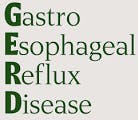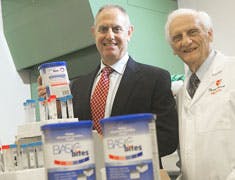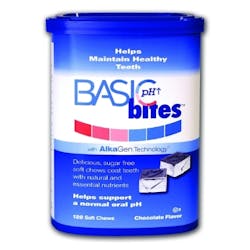The pH scale goes from 1 to 14, with a pH of 1 being the most acidic, and 14 being the most alkaline. A pH of 7 is neutral – the pH of pure water is very close to 7. At a pH of 5.5 the teeth begin to demineralize, putting them at risk for cavities. A healthy mouth is in a neutral pH range.
It’s all about acidTo keep your teeth healthy, you must keep oral acidity to a minimum. Teeth can actually become stronger and remineralize when the mouth has a pH of 7.5 or above. All acidity weakens teeth, but it is the amount of time that acids are in contact with teeth that determines how much damage occurs.I remember telling my patients not to give their children lollipops since they are in the mouth for such a prolonged time. Now, when I watch my own kids eat them, I cringe! Acidic saliva can cause many negative dental issues. A pH below 7.0 indicates an oxygen-deprived environment, which puts our teeth at risk for demineralization and cavities.
Acidic food is not the only issue we need to consider when looking at a low pH in the mouth. Conditions such as xerostomia or gastroesophageal reflux disease can cause acidity in the oral cavity. Xerostomia decreases the oral pH and significantly increases the development of plaque and dental caries.
Medical conditions (e.g., Sjögren’s syndrome, diabetes) and medications (e.g., antihistamines, antidepressants) can also impair salivary flow. The buffering capability of saliva that counterbalances the acidity created by certain foods is diminished.
ADDITIONAL READING | Low pH, soft drinks, decay, and obesity
Promoting remineralization
There is compelling evidence that alkali generation by bacteria on tooth surfaces can have significant benefits to healthy teeth maintenance. The acid-decalcification theory was described over 100 years ago by Miller in a two-step process. (1) In the first step, oral bacteria metabolize fermentable carbohydrates (e.g., sugars and starches) to produce acid, which then demineralizes tooth tissue.
Researchers have had better results in protecting teeth by combating the second step of the Miller process with fluoride. Fluoride inhibits the rate of acid solubilization of calcium phosphate, which constitutes most of the mineral in enamel, cementum, and dentin, and also favors remineralization of these tissues. (2)
Healthy saliva can simultaneously affect the acid production and the enamel remineralization processes. Many studies have been directed toward finding the basis of the substantial protective effect of saliva. These have included studies showing that saliva contains buffers, mostly bicarbonate and phosphate, which help neutralize the acids produced by the plaque bacteria. (3)
Saliva provides calcium and phosphate ions that inhibit demineralization while facilitating remineralization. Calcium phosphate raises the buffering ability of the plaque, allowing for the neutralization of plaque acids at the same time that its calcium and phosphate ions are rapidly released to remineralize areas of the teeth.
Landmark studies by Kleinberg identified certain bacteria in plaque that are able to produce base from nitrogenous substrates, which are provided mostly from saliva. (4) His research identified arginine as the key substrate in base formation. A study by van Wuyckhuyse et al. showed that individuals with elevated levels of salivary arginine have the healthiest base-generating oral microflora. (5)
This research has led to the development of the AlkaGen Technology, which contains saliva-based nutrients that promote healthy intraoral base-forming and mineralizing capabilities. Dr. Israel Kleinberg, a pioneer in the field of oral biology, developed this breakthrough technology at Stony Brook University School of Dental Medicine. The components of the AlkaGen Technology include arginine, calcium, carbonate, and bicarbonate.
Arginine is a common amino acid found in saliva and many foods. On teeth surfaces, arginine helps produce sustained base or alkali generation. This sustained buffering helps support pH levels on surfaces already in the normal range. Calcium is a very important mineral found in the human body that coats and helps support healthy tooth structure. Bicarbonate and carbonate are also naturally found in saliva and provide additional buffering, and support the benefits of arginine and calcium.
Over the last decade, a substantial body of research and clinical trials has demonstrated the profound benefits of this saliva-mimicking technology. Arginine, bicarbonate, and insoluble calcium have shown to be highly effective in treating dentinal sensitivity and reducing dental caries when added to oral care products with and without fluoride. (6, 7, 8, 9, 10)
ADDITIONAL READING | The benefits of xylitol for your patients are numerous
Shannon Nanne, RDH, is director of professional relations and education at BasicBites, and executive director of the Global Oral Cancer Forum.
References
1. Miller WD. The Micro-organisms of the Human Mouth. Philadelphia, PA: The S.S. White Dental Manufacturing Co.; 1890.
2. Ekstrand J. Enhancing effects of fluoride. In: Bowen W, Tabak L, eds. Cariology for the Nineties. Rochester, New York: University of Rochester Press; 1993:409-420.
3. Jenkins G. The Physiology and Biochemistry of the Mouth, 4th ed. Oxford, England: Blackwell Scientific Publications; 1978.
4. Kleinberg I, Kanapka J, Chatterjee R, et al. Metabolism of nitrogen by the oral mixed bacteria. In: Kleinberg I, Ellison S, Mandel I, eds. Saliva and Dental Caries. New York: Information Retrieval; 1979:357-377.
5. van Wuyckhuyse B, Perinpanayagam H, Bevacqua D, et al. Association of free arginine and lysine concentrations in human parotid saliva with caries experience. J Dent Res. 1995;74:686-690.
6. Acevedo AM, Machedo C, Rivera LE, Wolff M, Kleinberg I. The inhibitory effect of an arginine bicarbonate/calcium carbonate CaviStat-containing dentifrice on the development of dental caries in Venezuelan school children. J Clin Dent. 2005; 16:63-70.
7. Acevedo AM, Montero M, Rojas-Sanchez F, et al. Clinical evaluation of the ability of CaviStat in a mint confection to inhibit the development of dental caries in children. J Dent Res. 2008;19:1-8.
8. Petrou I, Heu R, Stranick M, et all. A breakthrough therapy for dentin hypersensitivity: how dental products containing 8% arginine and calcium carbonate work to deliver effective relief of sensitive teeth. J Clin Dent. 2009;20:23-31.
9. Kraivaphan P, Amornchat C, Triratana T, et al. Two-year caries clinical study of the efficacy of novel dentifrices containing 1.5% arginine, an insoluble calcium compound, and 1,450ppm fluoride. Caries Res. 2013;47:582-90.
10. Souza MLR, Cury JA, Tenuta LMA, et al. Comparing the efficacy of a dentifrice containing 1.5% arginine and 1450 ppm fluoride to a dentifrice containing fluoride alone in the management of primary root caries. J Dent. 2013;41S:35-41.











